
Jacques de Molay : The Last Grand Master
of reading - words
Who was Jacques de Molay ? What was his role in the Order of the Temple ? We will answer all the questions you may have about the life of the last Grand Master of the Order in this large blog article.
Today, we will look at the exciting life of one of the most important figures of the Middle Ages, Jacques de Molay, the last Grand Master of the Order of the Knights Templar, and we will follow with him the last march of the Knights Templar to the trial for heresy brought against them by the King of France. Jacques de Molay, the last Grand Master of the Knights Templar, an order of chivalry founded during the Crusades that had reached considerable power and wealth.
In this article, we will try to understand more deeply in the history of Jacques de Molay but also on the history of the Templar Order. For a better understanding of the life of Jacques de Molay, we will need to delve into certain details concerning the archives of the order.
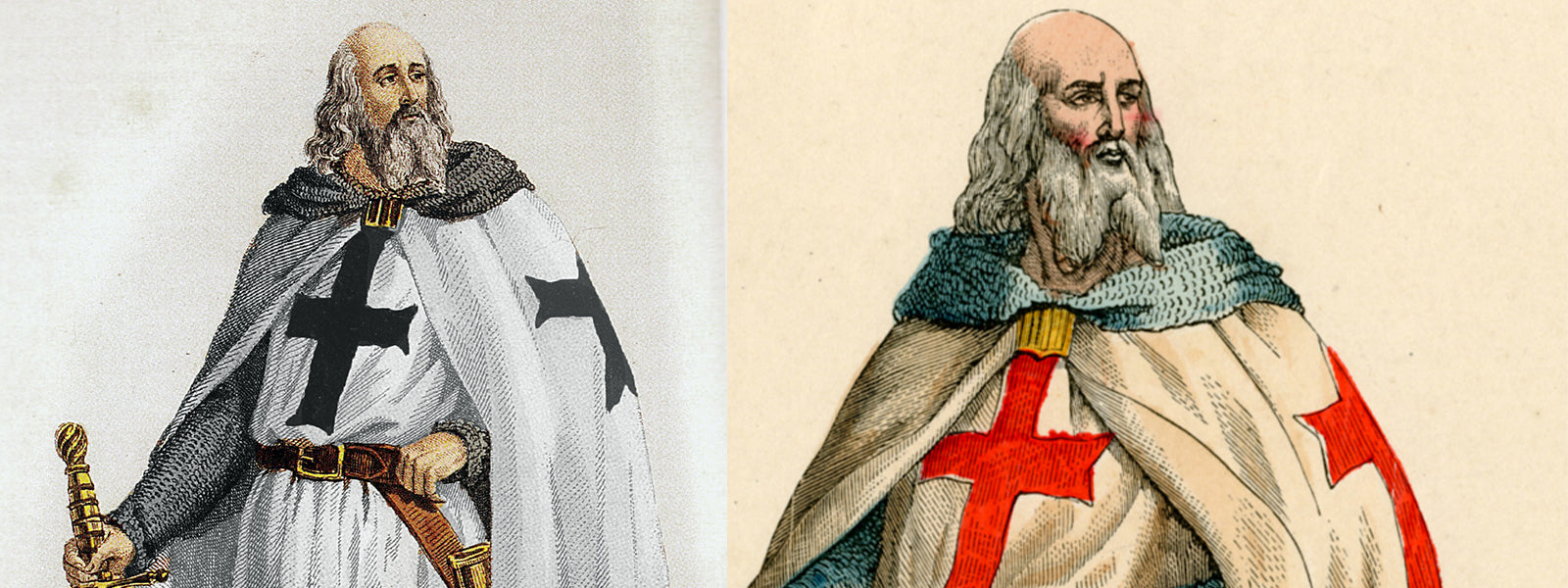
1) The Origins of the Last Grand Master
The story of Jacques de Molay is very difficult to define precisely. We know that he is from the Burgundian nobility, probably originating from Haute-Saône or the Jura. He was born between the years 1244 and 1248 and his childhood will be marked by the crusade of King Saint Louis. His reasons for joining the Order of the Knights Templar are unknown to us. It is possible that some of his ancestors inspired them. However, we have no evidence to prove it. He joined the militia of the Knights of Christ in the year 1265 in the commandery of Beaune and wore the white coat. He is thus made a knight. We do not know precisely what Jacques de Molay's actions within the Knights Templar were during his early years. He does not seem to have held an important position in either the East or the West. He is still an anonymous member of the Order. It is probable that de Molay will be in the Holy Land soon before the year 1273, without any certainty. But the geopolitics of the East at that time will require a regular and massive influx of young knights.

We find its trace at the second council of Lyon, in 1274. Jacques de Molay was in the West and attended the council in the company of the great master of the time, Guillaume de Beaujeu. This council is very important, because it is during this meeting that the fusion of the hospitallers orders and the Templars will be evoked for the first time. The two groups of knights had been in rivalry for a long time and several tensions had given rise to the idea of uniting them into one in order to centralize power, but also to prevent future incidents in the Holy Land. The fusion would be postponed by Guillaume de Beaujeu, but the question would come back when Jacques de Molay would become the master of the temple to make a small historical bridge. I remind you that the Order of the Temple was created in the Holy Land in 1119 and will be recognized by the Papacy at the Council of 3 in 829. The Order of Knights Monks is, of course, present in the Holy Land, despite the fact that the Latin states of the East have increasingly smaller territories. Nevertheless, the Order of the Temple is also present in the West and has numerous commanderies in Italy, Spain, Germany, the United Kingdom, but also in France. Thus, at the time Jacques de Molay joined the Order of the Temple, it was still an organization with political weight, a powerful army and still has a large influence. But now we will have to analyze the historical context that saw Jacques de Molay's early years as a young Templar.
2) The short truce with the Mamelukes
The situation of Christians in the East is catastrophic. The principality of Antioch had just been destroyed by the Mamelukes of Egypt and one fortress after another fell. The Christians were reduced to living in a few fortified enclaves on the coast. King St. Louis's Relief Crusade did not take the road to the Holy Land and failed outside the walls of Tunis. The Crusaders were left to their own devices in the face of the violence of the Mamluk armies. It is in this context that Jacques de Molay took part in the events. Thomas Bérard was master of the order from 1256 to 1273. He will lead the Templars during the worst period of the Crusades, without the responsibility for the loss of Christian positions being imputed to him. They are the result of the arrival of the Mamelukes on the political scene.
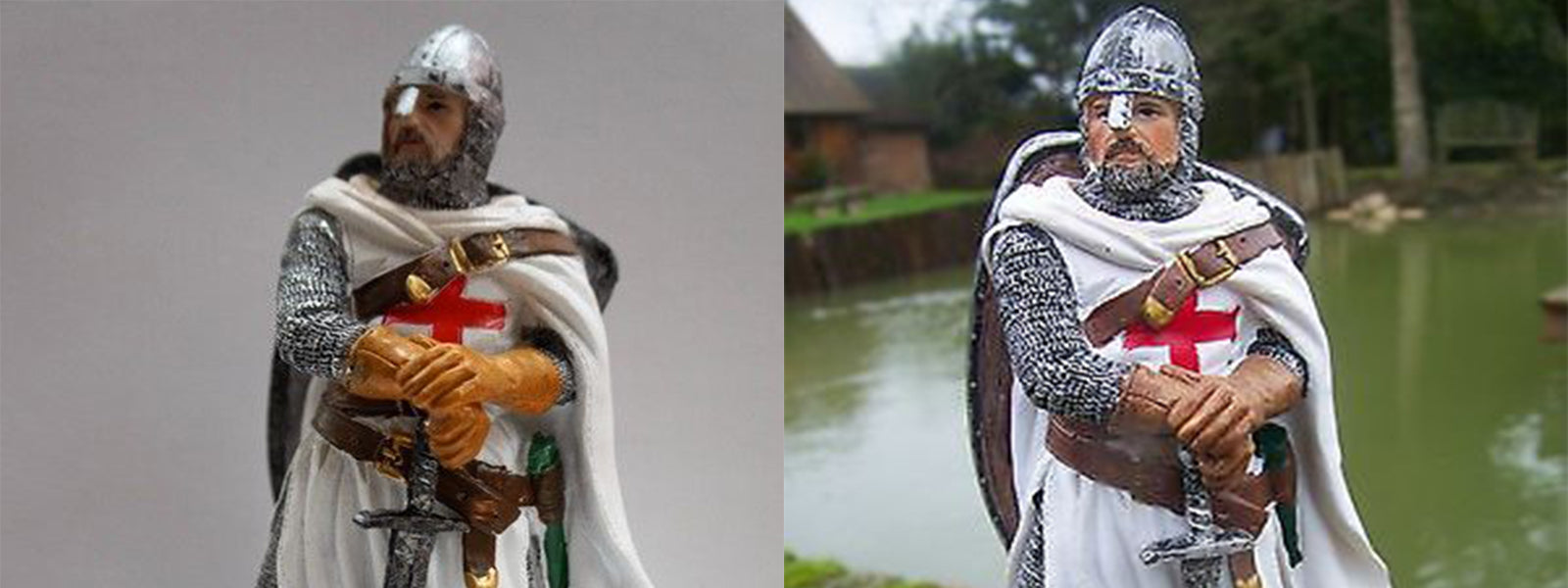
Thomas Bérard is a reformer. He wants to reshape the order and in particular to soften relations with the other orders of Templar or Hospitaller chivalry and two tonics agree if two orders are in conflict. The third will take on the role of the referee. Thomas Bérard followed the political line defined a few years earlier by Saint Louis. He was in favor of an alliance with the Mongols against the Mamelukes and the establishment of a new large-scale crusade, rejecting small skirmishing expeditions that were easily repelled by the Muslims. His successor, Guillaume de Beaujeu, will take a totally different path. The new master of the temple was elected in 1274 and it was he who took part in the Council of Lyon. But unlike his predecessor, he was not a reformer. He does not wish the alliance with the Mongols. On the contrary, he prefers to maintain good relations with the Mamelukes and is opposed to a new crusade. We must specify that William of Beaujeu was close to the king of Sicily, Charles of Anjou, and the latter did not wish a conflict with the Sultan of Egypt in order to establish his position in the Mediterranean. Guillaume de Beaujeu followed Anjou's policy with fervor and preferred to ensure the presence of the Franks in the Holy Land only via the powerful fortresses stuck to the sea, rather than playing the Mongolian card. At the time of the election of William de Beaujeu, a truce was in progress with the Mamluk Sultan following the Ninth Crusade led by Edward I of England. However, the situation remained precarious. The truce with the Mamelukes never lasted very long and the city of Tripoli fell in 1289 and St. John of Acre was the next target. The policy of ménagements led by Guillaume de Beaujeu did not bear its fruits and the last Christian enclaves are about to disappear.

The siege of Saint-Jean-d'Acre takes place in 1291 and the Grand Master is killed. After a brilliant resistance, the Templars evacuate the treasure, archives and relics to the island of Cyprus before the fall of the city. One of the first questions that interests us in relation to the subject of this article is whether Jacques de Molay was present during the siege of Saint-Jean-d'Acre. Well, once again we have no text and no information that allows us to attest to this. However, it is likely that Jacques de Molay was in the East and therefore, like all the Templars of the East, he inevitably had to fight in the stronghold of Saint-Jean-d'Acre where, eventually, he was perhaps based at Château Pèlerin or again in Sidon or Byblos. At the time of the fall of Saint-Jean-d'Acre, there were two great figures in the Order : Pierre de Brie, Marshal of the Order, and Thibaut Gaudin, Seneschal of the Order. Usually, it is customary for one of these two men to succeed the Grand Master. However, Guillaume de Beaujeu had just died at the siege of Saint-Jean-d'Acre. Pierre de Sivry will remain without fighting and will lead the struggle to the end. In the citadel of the Temple, the vault of Acre is called the Vault of Acre. For his part, Thibaut Gaudin will be in charge of evacuating the archives, the relics and all the goods that belong to the order, including the famous so-called treasure. He will also be in charge of evacuating the men to the island of Cyprus. This is how some considered Thibault Gaudin to be a coward who had fled Saint-Jean-d'Acre. But in reality, there had to be some kind of sustenance since the city was lost anyway. It is therefore in Cyprus that the adventure of the Knights Templar will continue.
The Templar Order is in a critical position. A large part of its fighters died in Saint-Jean-d'Acre and the loss of the Christian positions is a hard blow. The remnants of the temple are grouped around Thibaut Gaudin, who is elected master of the temple on the island of Cyprus. It is difficult to know the exact conditions of its elevation since the Commanders de Provence did not make the trip to the East. It is likely that Thibault Gaudin had to take the reins of the Order quickly, without going through an election, a kind of interim in a delicate situation. The situation demanded quick responses and the Knights Templar of Cyprus rallied to the figure of authority and experience they had on hand. This is where Jacques de Molay appeared. According to some, he would have been part of Thibaut Gaudin's government without any certainty, but highly probable. The interim temple master died in early 1292 and the election of a new master was to take place on a regular basis. Jacques de Molay had been a discreet Templar until then ; no position of command or responsibility is known to us. It is however unlikely that he is a total stranger. He was a master of the temple on April 20, 1292.

Alain Demurger, a specialist in the history of the Order, offers us a hypothesis on the absence or discretion of Jacques de Molay in the Order's archives. It is probable that he was close to the former master Tibo Bérard, the reformer who was a supporter of the Mongolian Alliance, and that he posed himself in opposition to Guillaume de Beaujeu's policy of conciliating with the Mamelukes. He would therefore naturally not have held positions of responsibility during the mastery of Beaujeu, being in opposition to his policy during the debacle of Saint-Jean-d'Acre and despite the heroism of the Grand Master. Guillaume de Beaujeu's policies were seriously questioned, which allowed the opposition camp to take over after the short interlude of Thibaut Godin, who acted as a transition master during the evacuation.
3) Jacques de Molay becomes Master of the Order of the Knights Templar
Jacques de Molay was elected Master of the temple and there seems to have been no dispute within the Order. Nevertheless, some historians hypothesize that there were two policies within the order. On the one hand, the one materialized by Jacques de Molay in the guideline of Tibo Bérard, a supporter of a reconquest of the Holy Land, a restructuring of the Latin states of the East, and above all, a large-scale crusade. Then, on the other side, there is Hugues de Pérot, more diplomatic, partisan of a more pacifist relationship with the Muslims and therefore of a kind of status quo. A policy of appeasement. Nevertheless, in view of the historical elements at our disposal, there does not seem to have been any further contestation of the arrival of Jacques de Molay as Grand Master by the so-called Hugues de Perrot.
A. A dangerous dilemma
The new Grand Master will have to face difficulties as never before in the order. The Latin states of the East have exploded. All that remains now is the kingdom of Cyprus and the Muslims have regained total supremacy of power over the East. Nevertheless, the very vocation of the Templar Order is the conquest of the Holy Land and the protection of the holy places of Christianity. Therefore, the question arises. Does the Temple Order still have legitimacy, knowing that the Holy Land no longer belongs to Christians ? Of course, there is a large organization in the West, with thousands of commanderies spread throughout Europe. The Order of the Temple has real temporal and military power, but its very existence is being questioned. Jacques de Molay will have to face this new dilemma. He will have to be the architect of a new crusading enterprise. And to do this, he must convince the lords of the West.

B. The grand master takes control
Jacques de Molay is not a great passive master, as many have described him, on the contrary, he is a man of action who struggles to make things happen. He maintains a broad correspondence with the Western powers and especially with the Crown of Aragon. He led several military expeditions in defense of Christian Armenia against the Muslims and worked to reactivate the Mongolian Alliance, of which Saint Louis and Thomas Bernhard had dreamed. Jacques de Molay installed his government on the island of Cyprus and set off for Europe in 1293 to reform the order. Dust it off or at least give it a new lease of life. The great master. Travels to Aragon, France, England and Italy. And it is perhaps in this period that he met Philip the Fair, the king of France. But we have no certainties on the matter.
He criss-crossed Europe to rally the princes of the West to his cause. He attends the election of the new Pope Boniface VIII, with whom he maintains excellent relations. Unlike the King of France, who will be in open conflict with the new pope. Jacques de Molay returned to the Holy Land in 1996 and worked to prepare for the future and the reconquest of the Holy Land. The Knights Templar, assisted by the hospital and the kingdom of Cyprus, coordinated their actions with those of the Mongols.

Jacques de Molay will be the prime contractor for these operations. The first action will be launched on Egypt in 1300. All in all modest, but sufficient to disrupt the Mamluk sultans, who were well occupied with Mongol pressure in Syria. The Christians possessed maritime supremacy over the Mediterranean and Jacques de Molay intended to take advantage of this advantage to open a bridgehead in the East to allow the landing of a new crusade. The operation is taking shape. The Knights Templar established themselves on the islet of Rouad, just in front of the Syrian coast and the citadel of Tortosa. Jacques de Molay knows that no Western crusade is underway, but the Mongols plan a vast military operation against the Mamelukes.
C. An unexpected event
The Knights Templar negotiated with the Great Khan for the future possession of Jerusalem and the ancient Christian territories. They reached an agreement, but the Mongolian army defected and postponed its operations, leaving the Knights Templar alone on the islet, maintaining the bridgehead for the crusade project that was underway. The absence of the Mongols allows the Mamelukes to concentrate their forces against the Christians on the islet of Rouad. But one disaster follows another. The Cypriot navy did not come to the rescue of the Templars, despite the insistence of Jacques de Molay. The hundred or so Knights Templar holds the position on the island, but the Mamelukes manage to disembark. Faced with the absence of the Christian fleet, the Knights Templar resisted for some time. Then the Mamelukes offer them surrender and the possibility of returning to Cyprus in complete safety. The Knights Templar accept, but the Mamelukes have them executed without warning, violating their treaties once again. The defenders of Rouad were indeed abandoned to their fate by the Cypriot fleet and King Henry II. Jacques de Molay did not abandon his crusade project despite this new failure, his goal remains the establishment of a beachhead for a future mass landing. But the Mongolian alliance was no longer reliable. The reconquest would have to come from the West and it was now necessary to convince the princes to set up a great expedition. Just like the first three crusades.
D. A strong opponent
Jacques de Molay is a man from another era. He struggles relentlessly to renounce the ideal of the Crusades and regain a foothold in the Holy Land. Unfortunately, most of the rulers of Europe have already moved on and have definitely abandoned Jacques de Molay's dream. The seat of the Order of the Knights Templar, meanwhile, is on the island of Cyprus. Nevertheless, the relations of King Henry II with Jacques de Molay are rather tense and one can say that there is a real animosity between the two men.

When there is a coup against the King of Cyprus Henry II, Jacques de Molay will take the side of his opponent. Unfortunately for him, King Henry II will succeed in maintaining his power, which will put the Knights Templar in a delicate position on the island of Cyprus, where the bulk of his military forces are located. At the European level, Pope Boniface VIII, who had excellent relations with Jacques de Molay, will die as a result of certain shenanigans on the part of the King of France, who will mishandle Boniface VIII a little, notably by having him captured and molested. What makes that the old man will die one month later. Following this, the King of France Philip the Fair wants a control on the Catholic Church and therefore, he will lead the elections so that it is a Frenchman who accedes to the throne of St. Peter. And so it will be Bertrand Dogo, better known as Clement V, who will accede to the papacy. A man who was put in place by Philip the Fair, but who will prove to be a man of true political sense. Let us also note that the Knights Templar, but also the other knights monks order, began to stir up rumors. Dark stories were beginning to gravitate around these knightly monks who had lost the Holy Land and were suspected of heretical acts, perjury and a whole host of other misdeeds. Their legitimacy, their very existence, was beginning to be questioned.
4) The Fusion of the Orders of Knighthood
Pope Clement V summoned the master of the temple and hospital in Europe to answer two questions. The future of the Crusades and the reconquest of the Holy Land, but also the fusion of the two orders of knighthood. Jacques de Molay knows that the fusion of the two orders is inevitable in the more or less long-term, but he also hopes that the fusion of the Knights Templar and Hospitaller would be more of the absorption of the temple by the hospital. And he will defend his positions and argue against the project. Jacques de Molay arrived in Europe in 1306 and became aware of the rumors that accused the Knights Templar. It is difficult to know if Jacques de Molay became aware of the seriousness of the situation at the beginning of 1307. Certainly, he had begun the restructuring of the order, but it was more a matter of reform than a resolution of the fundamental problems. Nor did he know that a project had been in gestation since 1305 in the mind of the King of France. To attack the Templars with the aim of weakening the papacy and all the elements were in place for Philip the Fair to take action. Jacques de Molay is the master of the hospital expose their plans to the pope on the question of the reconquest.
Foulques de Villaret, master of the hospitallers, proposes the setting up of a large-scale crusade, but that it be preceded by small expeditions in order to prepare the ground for the big one. With Egypt as a target, Jacques de Molay and the Temple did not share the same opinion. For him, preparatory expeditions were a waste of time and, above all, ineffective. The islet of Rouad is a good example. A small troop will be systematically swept away by the Mamelukes. He bets on a large-scale expedition in the same way as the Third Crusade, but with Egypt as a target, in order to strike at the heart of the Mamluk empire. On the question of the fusion of orders, Jacques de Molay sets out his counter-arguments.
In particular, he feared that the reunited order would come under the direction of a temporal sovereign like the King of France, which would take away its initial role and make it sink into European political affairs. This was not his function. The question of the fusion of orders fell through. At least for the time being. But Jacques de Molay, by his systematic refusal, places himself in a delicate position, especially in front of the King of France, who was precisely seeking the creation of this single order and to take the lead. It should be noted, however, that most of the sovereigns of Europe were in favor of merging the orders. They all wanted to take control of it. The king of France was the most active. He did not want the future order of knighthood to become the Pope's personal army.
5) The End of the Knights Templar
A. Arrest of the Knights Templars by the King of France Philip the Fair
Jacques de Molay became aware of the rumors and slander surrounding the Templar Order and decided to take matters into his own hands. He asked the Pope to open a papal investigation to shed light on all the gossip surrounding the Order. But what he did not know at the time was that the King of France and his two eminent men, Enguerrand de Marigny and Guillaume de Nogaret, had already put together a whole dossier to publicly accuse the Order. Hugues de Pérot, whom we have already mentioned earlier, one of the strong men of the Templars at that time was good friends with the King of France Philip the Fair and will try to intercede, to create the link between Jacques de Molay and the King of France in order to avoid the catastrophe. Nevertheless, this will not work. The machine was already in place and the king of France sent missives throughout Europe to order the arrest of the knights of the Temple. Its purpose was to cut the Pope off so that the pontifical inquiry would not have time to be set up. His aim was to arrest the Knights Templar quickly, to make them confess their crimes and to seize the Temple's riches. One of the mistakes Pope Clement V made was to warn the King of France that the pontifical investigation would begin in November. And so it was that things were going to be rushed.

Philip the Fair is going to launch his operation. On Friday, October 13, 1307, all the Templars of France was arrested by Philip the Fair's men. A handful of Templars will nevertheless manage to escape, in particular the French Master Gerard de Villiers with his 40 men. The King of France sends letters to all the sovereigns of Europe to enjoin them to arrest the Knights Templar in their kingdom because of heretical practices.
Most of them do not give credence to the accusations and will not follow the King of France in his action. The Knights Templar are tortured by the inquisitors and confessions are extracted. Jacques de Molay himself confesses two crimes : denying Christ and spitting on the cross during the initiation ceremony at the Temple. But he refutes the other accusations, such as the adoration of an idol or homosexual practice within the order. The question of whether Jacques de Molay was tortured is still debated today, and several contradictory documents maintain doubt.
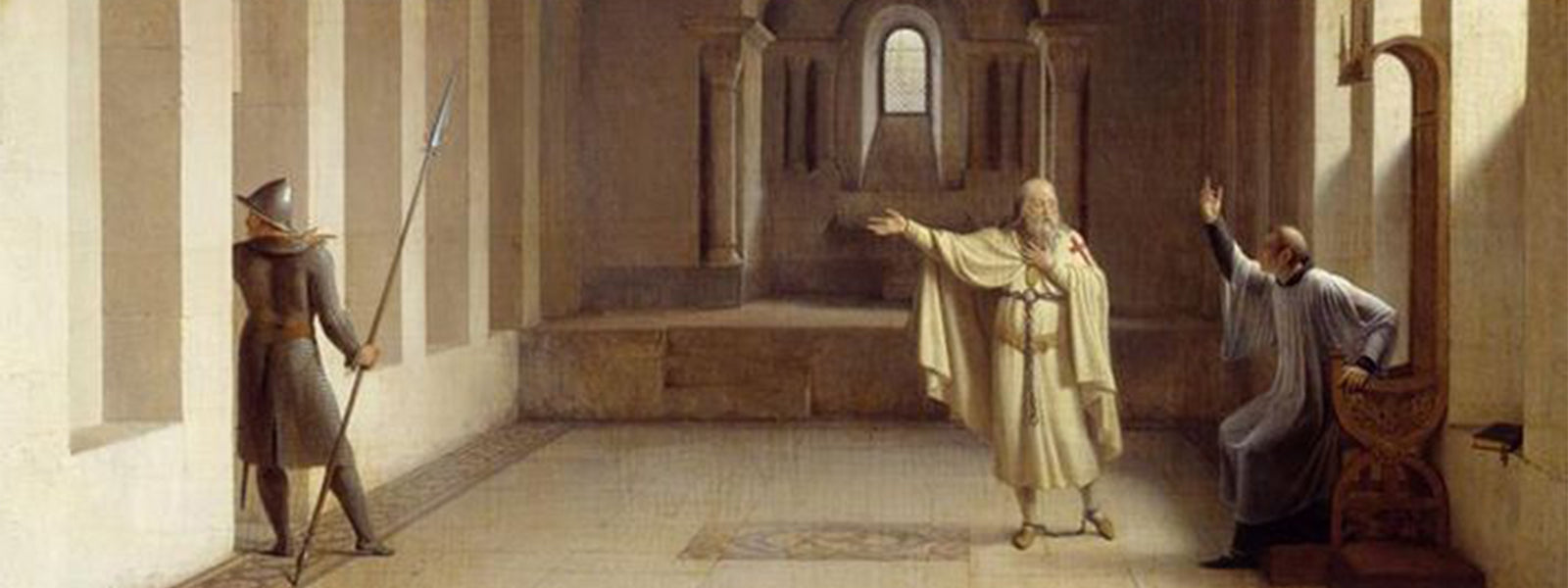
Pragmatically, torture or the threat of torture may be sufficient to explain Jacques de Molay's position. It should be noted, however, that the Grand Master's statements are very summary. It is quite possible that de Molay is simply telling the truth about practices used in the order, knowing full well that many Templars would mention them during interrogations. The Grand Master, probably manipulated, wrote a manifesto inciting the Knights Templar not to hide anything and to answer the questions of the inquisitors, which, in any case, was already the case. Philip the Fair could savor his victory. He already thought he had broken the order by the revelations of hundreds of Templars. Note that the purpose of this article is not to expose all the elements of the Templar trial, but to follow the story of Jacques de Molay and his posture in the face of the accusations. The Knights Templar as well as the dignitaries confessed. This is enough to condemn the order in the eyes of Philip the Fair. But the Pope sought to take matters in hand again and in any case, given the state of affairs, the Order of the Temple could no longer get away with it. Pope Clement ordered the arrest of all the Knights Templar of Europe on November 22.
B. The Templars are left to their own devices
Nevertheless, there will be resistance in the kingdoms of Aragon and on the island of Cyprus. Clement V demanded that he himself question the Templars and in particular the dignitaries. He sends two bishops to meet de Molay, and the latter retracts his confession. The pope orders to meet the Knights Templar and the head of the Order himself in Poitiers. Philip the Fair, who sensed that the situation was getting out of hand, decided to send 72 carefully selected Knights Templar to Poitiers, but used the poor health of the dignitaries as an excuse to evacuate them. The Pope again sends his emissaries to meet Demolin. In 1308, the cardinals interrogated de Molay and he returned to his first confession and received absolution for his crimes. A complicated situation. Why did de Molay go back on his confession ? He was not tortured. It is likely that there is an agreement with the Pope's emissaries. Perhaps it was useless to deny the evidence of the practices of the initiation ritual in view of the hundreds of testimonies throughout France. The pontifical commission was set up to judge the Order. But Philip the Fair could judge the Templars independently as an individual, but had no power to attack the order directly. Thus, two procedures coexisted and opposed each other. Jacques de Molay was heard by the pontifical commission in 1310 and his defense posture did not fail to intrigue. Let us recall that he had received absolution for his crimes and that there was probably an agreement with the Pope. The Grand Master did not retract his confession and relied solely on the Pope's judgment as to the future of the Order of the Temple. He remained silent and did not speak again until 1314, at least according to the sources known to us. At this stage of the trial, the situation is extremely complicated, as most of the Knights Templar are left to their own devices. It should be noted that there are about 500 people who have been arrested on the territory of France today. We are not going to look at the different cases that are taking place in Europe, which is totally different from the French case.

The Knights Templar are left to their own devices and, above all, cannot solicit their dignitaries to defend the order. The arrival on the political scene of the Pontifical Commission will reassure many Templars who believe that, thanks to it, they will be able to defend their cause. They will, moreover, retract their confessions in order to defend the order and, above all, to counteract all the calumnies launched by the King of France. But it was badly to know Philip the Fair. Let us make a small point of the situation. On the one hand, we have the pontifical commission that was going to judge the Order in its entirety in relation to the accusations. Then, on the other hand, we have Philip the Fair and the Grand Inquisitor of Paris, as well as his two acolytes, Enguerrand de Marigny and Guillaume de Nogaret, who could judge the Templars independently for heretical practices. Thus, when a Knight Templar defended the Order, retracting their confessions, then, as an individual, Philip the Fair declared him to be a priest and sent him to the pyre. This is how many Templars will be burned in the public square, having retracted their confessions. This is how the others will no longer dare to retract their confessions and will no longer ensure the defense of order, which finds itself completely left to itself, once again, without the support of the dignitaries who have walled themselves in silence. It was now necessary to wait for Pope Clement to make his decision regarding the judgment of the Templar Order as a whole.
C. The 3 possible destinies following the individual trial of each Knight Templar
The Council of Vienna of 1312 will decide on the future of the Order. Philip the Fair wishes his outright condemnation and that the riches of the temple on French soil return to him. Clement V can no longer save the Order, but will make a last trick to the King of France. He declares the abolition of the Order of the Knights Templar without condemning it and its wealth and possessions will return to the Order of the Hospitallers. The merger of the two orders had indeed taken place. Rather absorption by the hospital, as the Knights Templar feared. But Clement V had stolen victory from the King of France. The Order was not condemned, but the Knights Templar, individually, would be. The pope retains the prerogative of judging the four dignitaries who will be locked up in the castle of Gisors. There are three possible fates for each Knights Templar following their individual trial.
- First situation : They confessed their crimes and never retracted their statements. In this case, they will be freed and absolved of their sins and some of them will join other orders of chivalry or monasteries later on.
- Second situation : They have never confessed to a crime and in this situation they will be sentenced to life in prison because they are considered liars.
- The third case is the most complex. These are those who have confessed to crimes and later retracted their confessions. Most of them will be declared innocent and burned at the pyre. In this situation, we understand why many Templars have confessed their crimes without later retracting their statements. It was the only way they could get away with it individually.
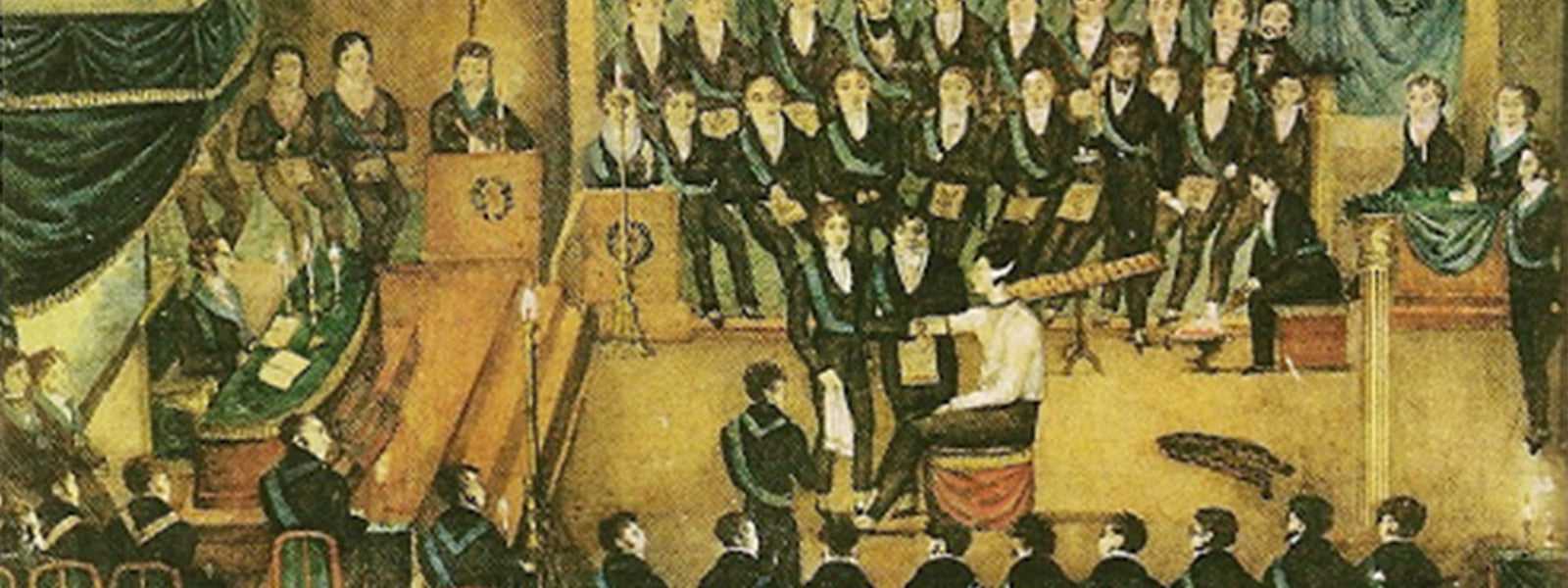
D. Jacques de Molay burned on the pyre
We come to the judgment of the dignitaries in 1314. Jacques de Molay, the great master of the temple, Geoffroy de Charnay, commander of Normandy, Hugues de Pérot, great visitors of France who, incidentally, was in good relationship with Philip the Fair before the events. This will not prevent him from being condemned like the others. And finally, Geoffroy de Gonneville, master of the province of Aquitaine. All will be condemned to life imprisonment although the order no longer existed since the papal bull. Vox in, exception of the Council of Vienna.
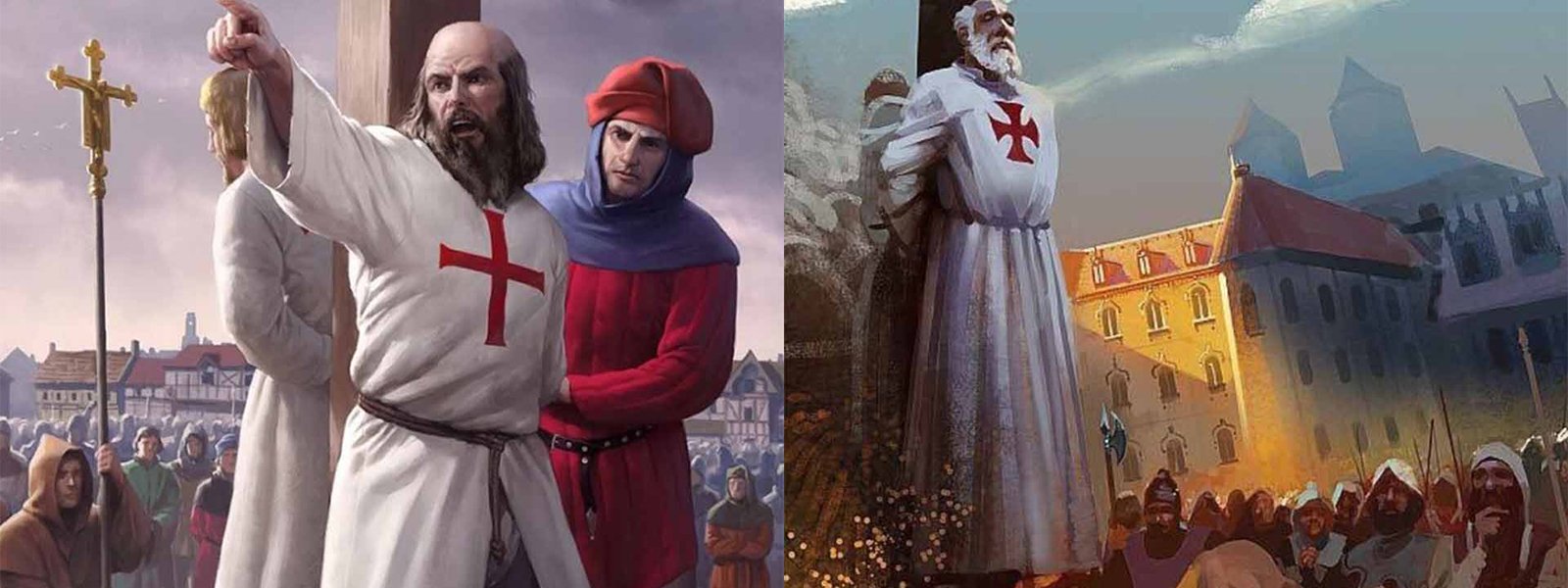
Jacques de Molay rebels and goes back on his confession and declares himself innocent, as well as the whole Order. Geoffroy de Charnay followed him in his declarations. The two men know very well what awaits them. Hugues de Perrot and Geoffroy de Gonneville remain silent. Philip the Fair is eyebrowed, declares them to be released and condemns them to be burned at the pyre which will take place the same evening on the 'Ile de la Cité', in Paris. It is still a violation of canon law. For the decision had to be made by the Pope. But Philip the Fair had long since exceeded his attributions. Jacques de Molay went up to the stake and pronounced his last words against the injustice that struck at the order, asking for divine justice, which alone knows the truth about the Order.
E. The Order disappears
Contrary to many preconceived ideas, the Order has never been condemned in its entirety by Pope Clement V. He was never declared a heretic and the charges against him were never validated. The Templar Order simply disappeared. It ceased to exist by a papal bull that put an end to its prerogatives and its existence. As a result, all the property of the Temple returned to the Order on French territory.
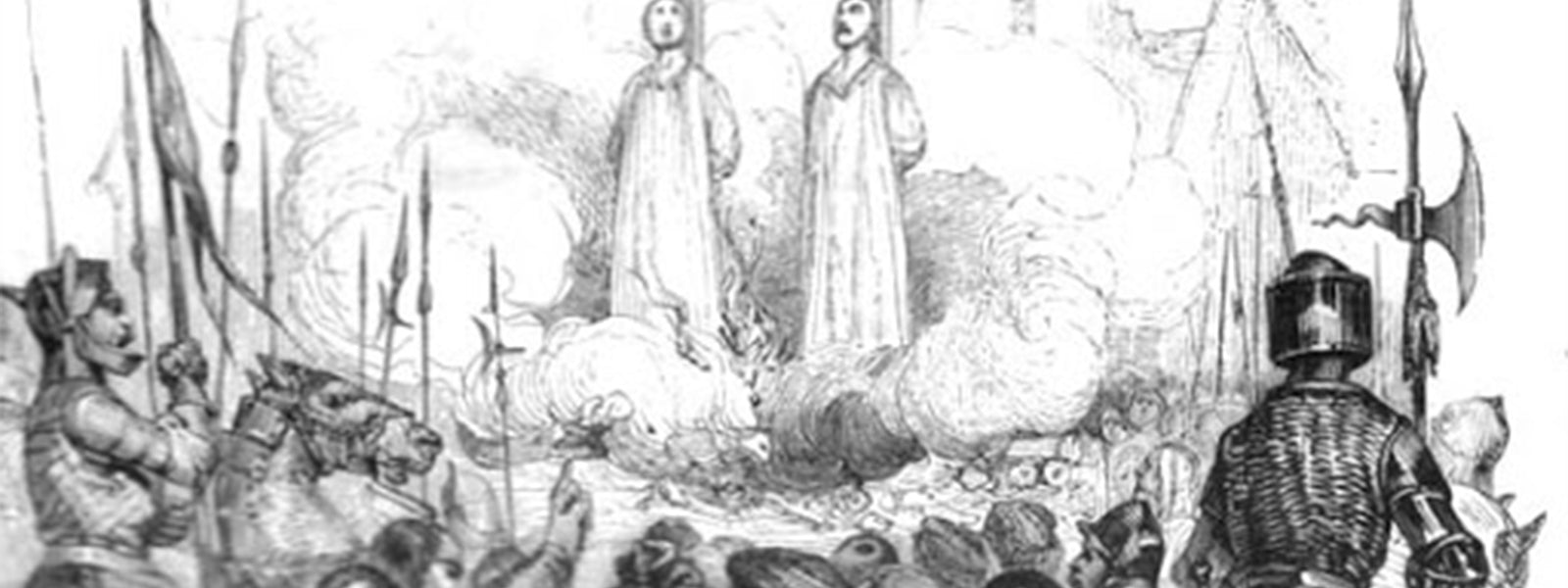
There is a legend that says that the last great master of the temple on his pyre would have pronounced a sentence against William of Nogaret, Pope Clement V and King Philip the Fair of France to come before the court of St. Peter within a year. However, it is true that the three characters will have an incredible death. Let us note nevertheless that William of Nogaret had died before the pyre of Jacques de Molay and that, indeed, Pope Clement V will die about a month after the trial, at least, after the pyre of Jacques de Molay and the King of France, a little less than a year. Unfortunately, this sentence has probably never been pronounced. In fact, it was invented by Maurice Druon in the series of books, the cursed kings, lending a legendary side to the death of Jacques de Molay. Nevertheless, it is true, conversely, that Jacques de Molay really invited the truth about the Temple to be made in the other world, in paradise, and that only God knew the truth about the secrets of the Order and the veracity of the possible accusations. He believed that the Order was innocent, and he trusted in the tribunal of God. This was Jacques de Molay's main mistake. For a moment, de Molay was silent and did not take up the defense of his Order. It is possible and even probable that the Order could never have been saved, neither by Jacques de Molay nor by any of the other dignitaries. Nevertheless, the fact that the Order was silent and relied solely on the pope who, it should be remembered, had been placed on the throne of St. Peter by the king of France put Pope Clement V in a relatively delicate position. Also, contrary to other received ideas, Pope Clement V did not accuse the Knights Templar. He did not seek to destroy them as presented in the film and book The 'Da Vinci Code'. On the contrary, Clement Von tried to protect them. But it was not to his liking. He only limited the damage. If one can say, by advocating the abolition of order and stealing wealth, by preventing Philip the Fair from getting his hands on them and by handing them over to the Hospitaller Order.
Nevertheless, the legends are tenacious and the memory of Jacques de Molay will ignite the imagination and survive the centuries, especially during the French Revolution, when Louis XVI will be beheaded after the events of the Revolution. Some people in the crowd will shout 'Jacques de Molay, you are avenged', which reminds us that the memory of the Order was still alive and that Louis XVI was considered a worthy descendant of Philip the Fair, who had martyred the Order.
6) Conclusion: The End of an Era
So, to conclude, was the Order guilty or innocent ? Well, this is a very delicate question and we will try to answer it in a future article that will be dedicated to this subject. Today on the figure of Jacques de Molay, some have considered that he was a bad Grand Master and that it was because of him that the Order was condemned. This judgment seems a little peremptory and even totally arbitrary. Jacques de Molay was a man of his time, a worthy successor to Tibo Bérard. He was a man of the Crusades. His one and only objective was the greatness of the order and the reconquest of the Holy Land. Nevertheless, he was confronted with a situation that no great master before him had had to live through. Perhaps another man, a diplomat, such as Hugues de Perrot, would have been better able to protect the Templar Order in the face of the lawsuit that would be brought against them. Nevertheless, Jacques de Molay was a man of the field, a man of the East, a man of the crusade and of the reconquest of the Holy Land. He was not a politician, he was not a man prepared for the political shenanigans of Europe, who had finished with the age of the Crusades and had finished with the Order. This power within the State was the decisive element that pushed Philip the Fair to get rid of them. There were several reasons. First of all, the aim was to weaken the papacy, but also to improve its finances, so to speak, by appropriating the wealth of the time, but above all to avoid the creation of a state in a state of separation. For it is true that the Knights Templar owned a great many commanderies on French soil and, as a result, a large portion of the territory. Jacques de Molay, for his part, will remain for eternity one of the central figures of the Middle Ages, marking the end of an era as the last Grand Master of the Order. This famous order of knightly monks that excites the imagination so much and conveys so many fantasies. His memory will remain beyond the centuries.



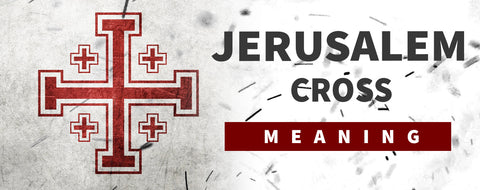
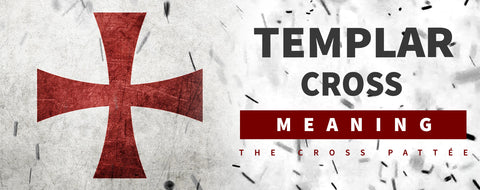
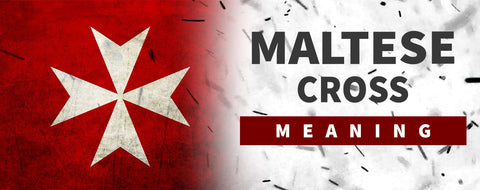
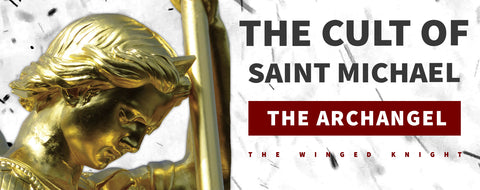
Anil Uner Erden
I love this story so much I always love My Handsome Christian White Blonde European American Crusader Knights so much. Deus Vult always.
Guy Bullock
I find this very educational. Please continue